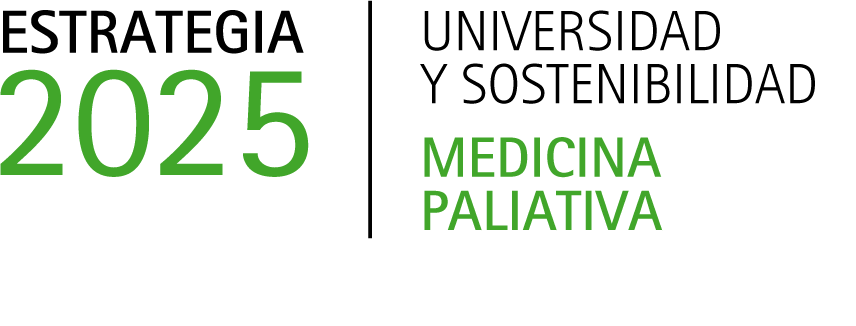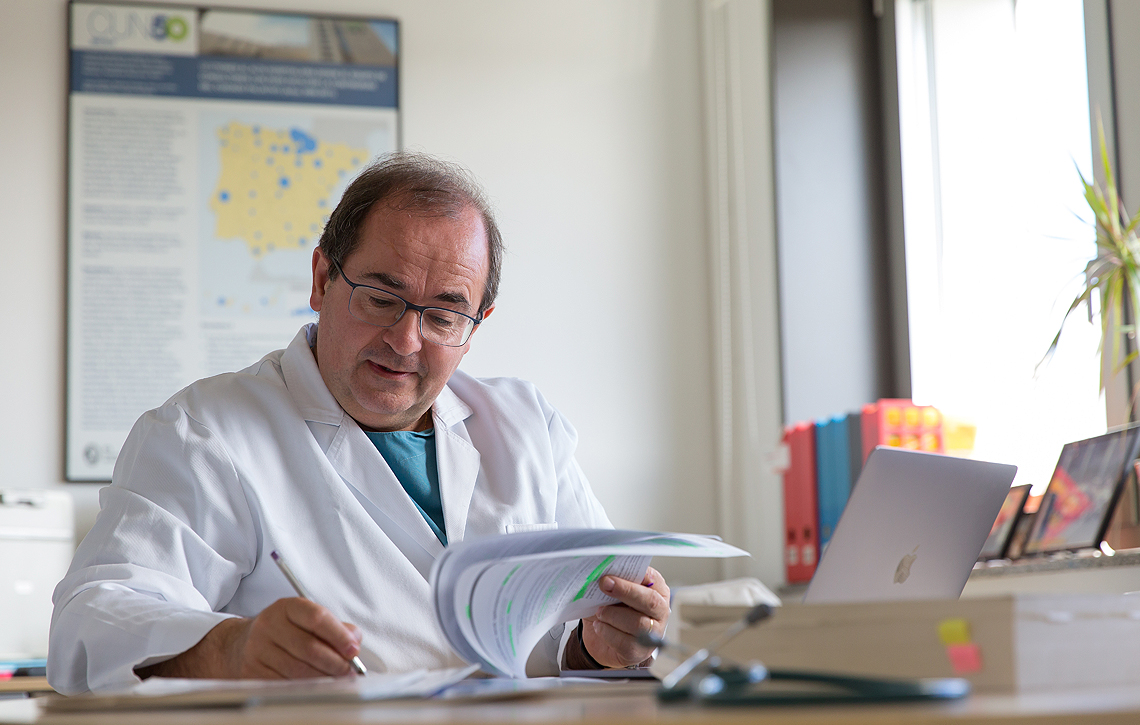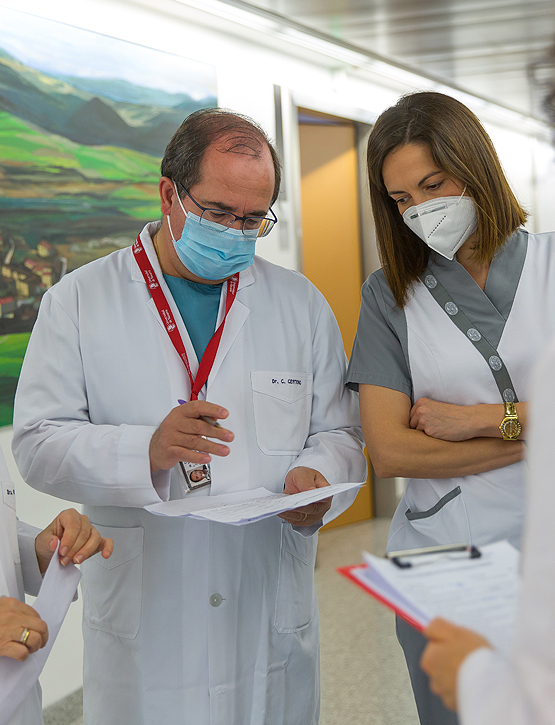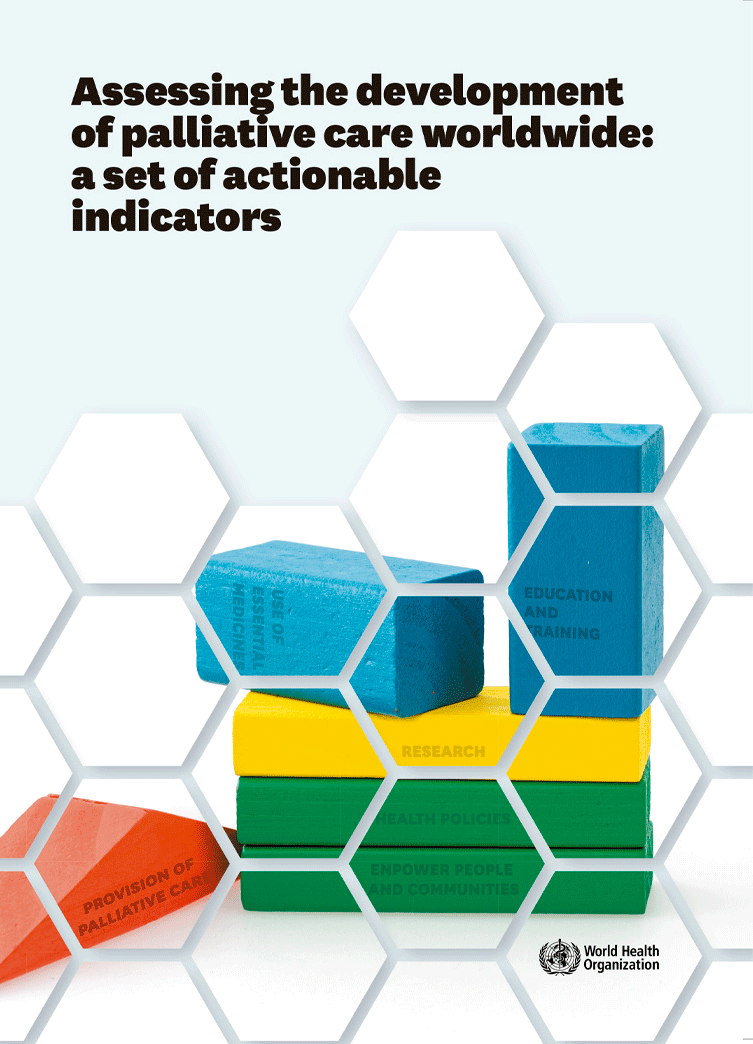In the picture
Carlos Centeno leads a team multidisciplinary, made up of doctors, nurses and psychologists, but also of researchers in the social sciences and Humanities: historians, philologists, a social worker...
Dr Centeno argues that palliative medicine is advanced medicine. "Some people say: "but you don't do anything"," he complains, but with a smile. "We don't do anything in the sense that we don't use a technique, a device, a diagnostic test ...", he acknowledges. "What we do is actively care . Evaluate. Identify problems. Giving support. And to accompany, not only the patient, but also the family. And this requires advanced medicine. And he explains: "You have to know a lot about pain and symptom management. You have to know how to use the drugs available. You have to know a lot about the emotional component of the person to identify what is happening: if the patient is discouraged or demoralised, if the problem is in adapting to the process.... You have to know how to communicate. And you have to know how to respond to the ethical questions that we often face. And all of this requires research," he concludes.
In Spain, Palliative Medicine began to develop in the 1990s and did so strongly. Until 10 years ago. "Then, everyone forgot about it," Centeno recalls. "It has only been now, following the discussion debate on euthanasia, that we have remembered that the terminally ill have needs and we have started to talk about palliative care. The problem is that we often don't know what we are talking about. When referring to palliative medicine, old concepts are often used, thinking that it is applied to those who are going to die, when there is nothing more to do. "Palliative medicine is very active," replies Dr Centeno. "People are surprised when they find out that we treat patients at enquiry. But what we do is alleviate the intense suffering of those who have a serious illness. That is palliative medicine today.
That is why it is not black, not even grey. Although Carlos Centeno acknowledges that in his day-to-day work as a palliative care doctor there are intense and difficult moments, when asked what is the hardest thing about his profession, he is clear: "The hardest thing is to see suffering and not to relieve it. And we see that sometimes. But to see someone die peacefully? That's not hard at all. It can even be beautiful and comforting. When you see someone arrive at your enquiry in a situation of emotional stress, fear, confusion... and little by little, that complex, difficult situation unravels, and that person advances in the process of acceptance, or at least of adaptation, and comes to die in peace.... There is nothing hard about that: it is very beautiful and very comforting. And it is something worth dedicating one's life to: to ensure that more and more people have the necessary support to make the journey that we will all have to make one day".





